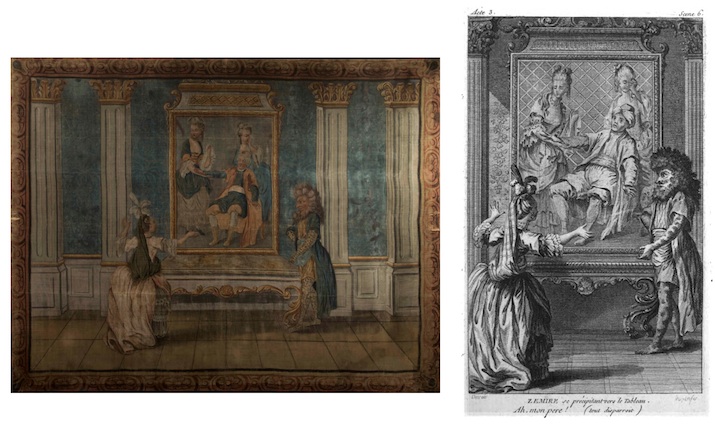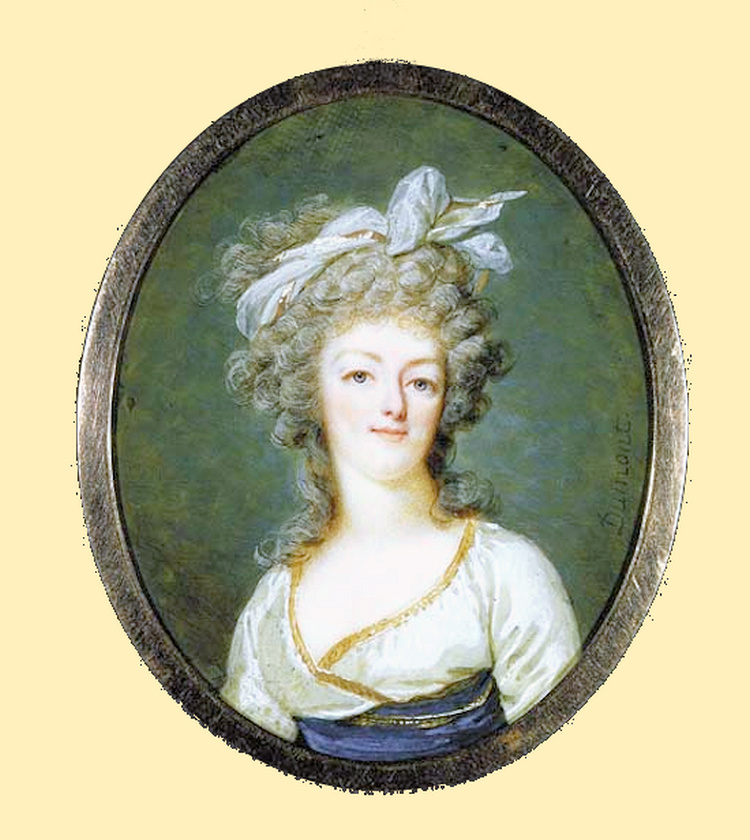Here is a depiction of
Zemire et Azor in tapestry:

'This interesting set of five faux tapestry panels depict scenes from Andre Modeste Grétry’s opera-comique,
Zémire et Azor. A favorite of Marie-Antoinette, it was composed by Grétry (1741-1813) and its libretto was written by Jean-Francois Marmontel (1723-1799). It was first performed at Fontainebleau on the 9th of November, 1771, and was dedicated to Madame du Barry; it would later be performed for the emperor Napoleon. The story was an adaptation set in Persia of Jeanne-Marie Leprince de Beaumont’s tale
La Belle et la Bête (B
eauty and the Beast), first published in 1756.
The designs of the present tapestries derive from five of the illustrated scenes published in Marmontel’s original libretto, drawn by the French draughtsman Claude-Louis Desrais (1746-1816) and engraved by Auvray, Dupin fils and Patas. The plates in Marmontel’s play chronicle the story of Zemire and Azor as follows:'

'The Persian merchant, Sander, and his servant Ali are shipwrecked and find themselves in a strange palace. A banquet has been laid out, but there is no sign of any residents and so they help themselves to the feast. While surveying the palace and grounds, Sander picks a lovely rose from the palace garden to bring home to his daughter, Zémire. Suddenly, Azor, the beast-like owner, appears and demands that Sander pay with his life for the theft, unless he can persuade one of his daughters to take his place at the palace.'

'Ali and Sander return home, and he presents her with the rose, however, this happy reunion is followed by the news of the bargain. '

'Zémire faints at the sight of the beast (figure 3), but agrees to the exchange in order to save her father.'

'In spite of his startling appearance, Azor proves to be a kind host, and shows Zémire a magic mirror in which she can see her family.'

'He goes so far as to allow Zémire to visit her family on the condition that she return to him. After staying with her family for a while, Zémire returns to find Azor in a state of dispair as he thought she had abandoned him. She refutes this sentiment, proclaiming that she cares about him, and the magic spell that had kept him a beast for so long is lifted, changing him back into a handsome prince. Azor reclaims his kingdom with Zémire at his side and they celebrate with her family.'
'The costume and décor illustrated in the panels follow the much imitated, extravagant
A La Turc style promoted by Marie-Antoinette, which represented the height of fashion and opulence, and was disseminated in plates such as those by Desrais. It seems extremely likely that the five panels were conceived as preliminary designs or maquettes for tapestries, probably for one of the great French factories such as Aubusson or Beauvais.'
http://www.carltonhobbs.net/decorative-objects/tale-as-old-as-time-in-tapestry/2015/11/16/
I really love this, the tapestries as well as the story. Look a this beast face !

